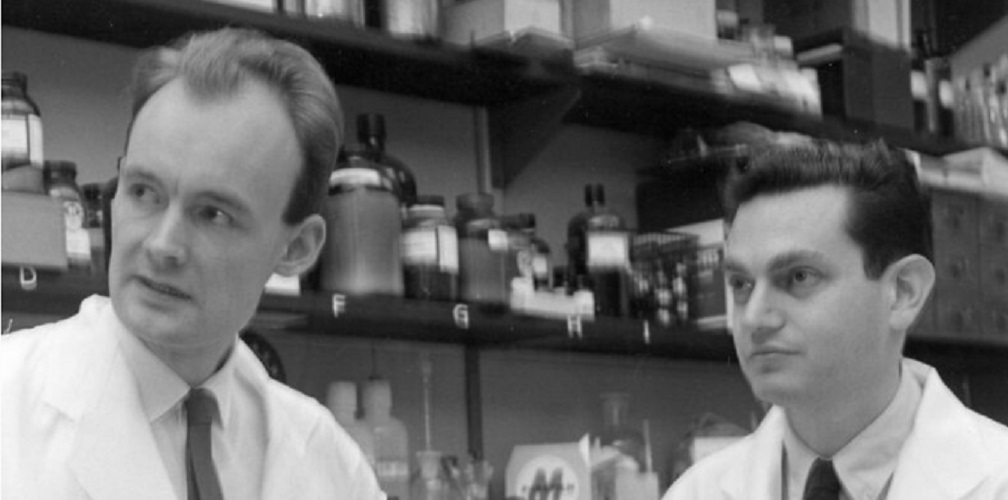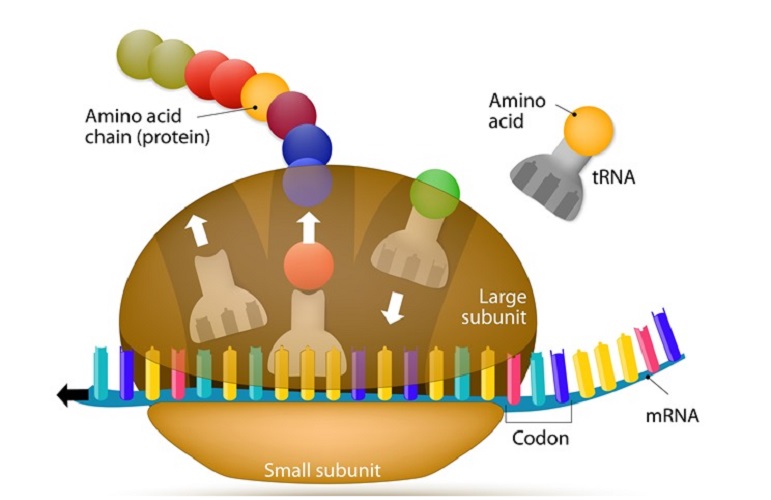What is the genetic code?
We explain what the genetic code is, its function, composition, origin and other characteristics. Also, how was his discovery.
-
What is the genetic code?
The genetic code is the precise ordering of nucleotides in the sequence that composes DNA . It is also the set of rules from which said sequence is translated by the RNA into an amino acid sequence, to compose a protein . In other words , protein synthesis depends on this code .
All living things have a genetic code that organizes their DNA and RNA. Despite the obvious differences between the different realms of life, the genetic content turns out to be similar in large proportions, which suggests that all life must have had a common origin. Tiny variations in the genetic code can give rise to a different species .
The sequence of the genetic code comprises combinations of three nucleotides , each called a codon and responsible for synthesizing a specific amino acid (polypeptide).
These nucleotides come from four different types of nitrogenous bases: adenine (A), thymine (T), guanine (G) and cytosine (C) in the DNA, and adenine (A), uracil (U), guanine (G) and cytosine (C) in RNA.
In this way a chain of up to 64 codons is constructed , 61 of which make up the code itself (that is, synthesize amino acids) and 3 mark start and stop positions in the sequence.
Following the order that this genetic structure determines, the body’s cells can gather amino acids and synthesize specific proteins, which will fulfill certain functions in the body.
-
Characteristics of the genetic code
The genetic code has a series of basic characteristics, which are:
- Universality . As we have said before, all living organisms share the genetic code, from viruses and bacteria to people , plants and animals . This means that a specific codon is associated with the same amino acid, regardless of which organism it is. 22 different genetic codes are known, which are variants of the standard genetic code in just one or two codons.
- Specificity . The code is extremely specific, that is, no codon encodes more than one amino acid, without overlapping, although in some cases there may be different start codons, which allow different proteins to be synthesized from the same code.
- Continuity . The code is continuous and has no interruptions of any kind, being a long chain of codons that is always transcribed in the same direction and direction, from the start to the stop codon.
- Degeneration . The genetic code has redundancies, but never ambiguities, that is, two codons can correspond to the same amino acid, but never the same codon to two different amino acids. Thus, there are more codons other than minimally necessary to store genetic information.
-
Discovery of the genetic code

The genetic code was discovered in the 1960s , after Anglo-Saxon scientists Rosalind Franklin (1920-1958), Francis Crick (1916-2004), James Watson (1928) and Maurice Wilkins (1916-2004) discovered the structure of the DNA , starting the genetic study of cellular protein synthesis.
In 1955 the scientists Severo Ochoa and Marianne Grunberg-Manago managed to isolate the polynucleotide phosphorase enzyme. They found that in the presence of any type of nucleotide, this protein constructed an mRNA or messenger composed of the same nitrogen base, that is, a single nucleotide polypeptide. This shed light on the possible origin of both DNA and RNA.
The Russian-American George Gamow (1904-1968) proposed the genetic code model formed by combinations of the nitrogenous bases known today. However, Crick, Brenner and their collaborators demonstrated that the codons are composed of three nitrogen bases only .
The first evidence of correspondence between the same codon and an amino acid was obtained in 1961 thanks to Marshall Warren Nirenberg and Heinrich Matthaei.
Applying their methods , Nirenberg and Philip Leder were able to translate 54 of the remaining codons. Subsequently, Har Gobind Khorana completed the transcription of the code. Many of those involved in this race for deciphering the genetic code were deserving of the Nobel Prize in Medicine.
-
Function of the genetic code

The function of the genetic code is vital in the synthesis of proteins, that is, in the manufacture of the basic basic compounds for the existence of life as we understand it. Therefore, it is the fundamental pattern for the physiological construction of organisms , both of their tissues, as of their enzymes , substances and fluids.
For this, the genetic code operates as a template in the DNA, from which the RNA is synthesized, which is a kind of mirror image. Then in RNA the cellular organelles responsible for the construction of proteins (ribosomes) are displaced.
In the ribosomes synthesis begins according to the pattern that passed from DNA to RNA . Each gene is thus associated with an amino acid, building a chain of polypeptides. This is how the genetic code works.
-
Origin of the genetic code
The origin of the genetic code is probably the greatest mystery of life. It is intuited, since it is common to all known living beings , that their appearance on the planet was prior to that of the first living being , that is, the primitive cell that would give rise to all the realms of life.
Initially, it was likely to be much less extensive and had barely the information to encode a few amino acids, but it would have grown in complexity as life arose and evolved.





